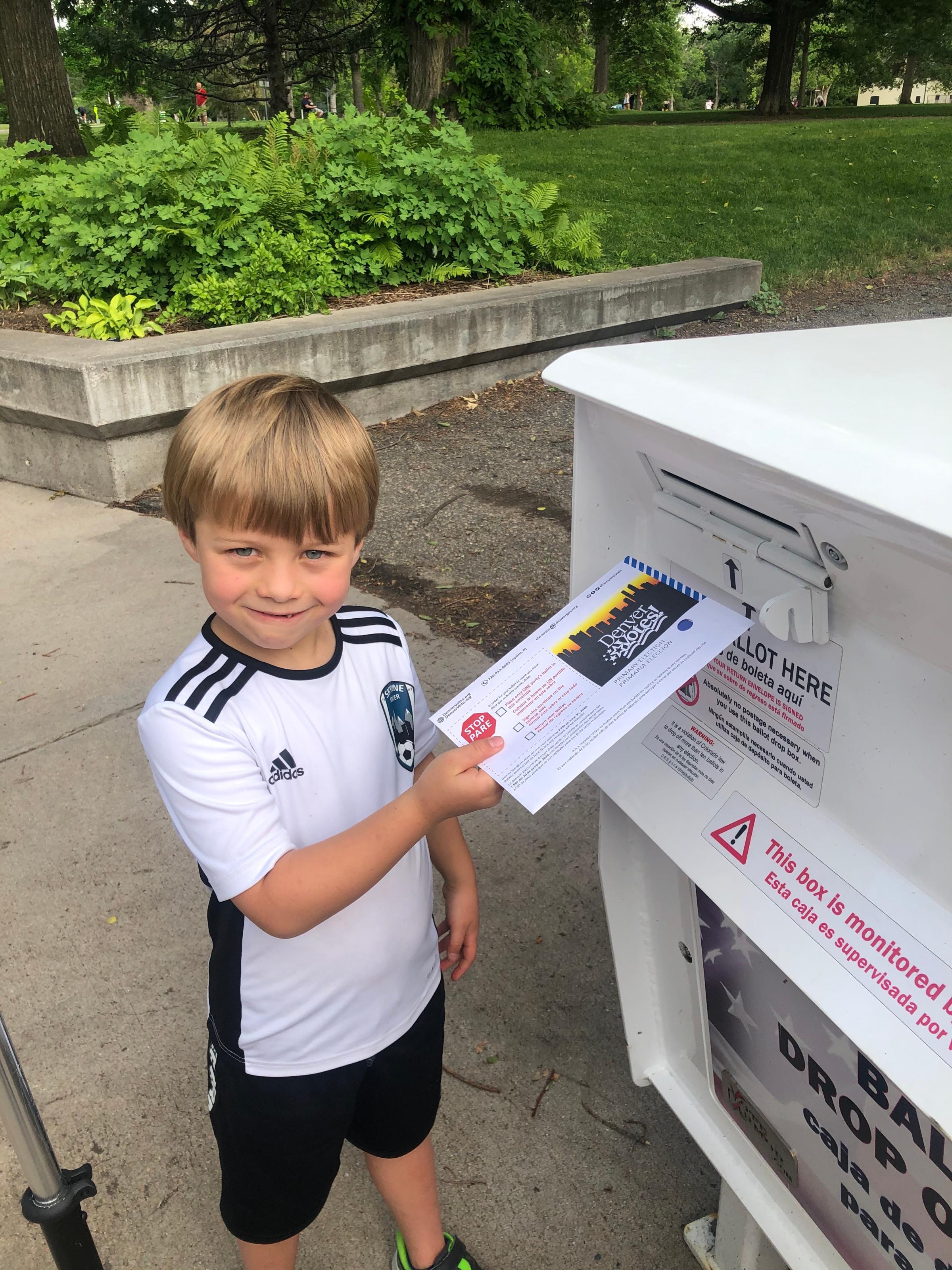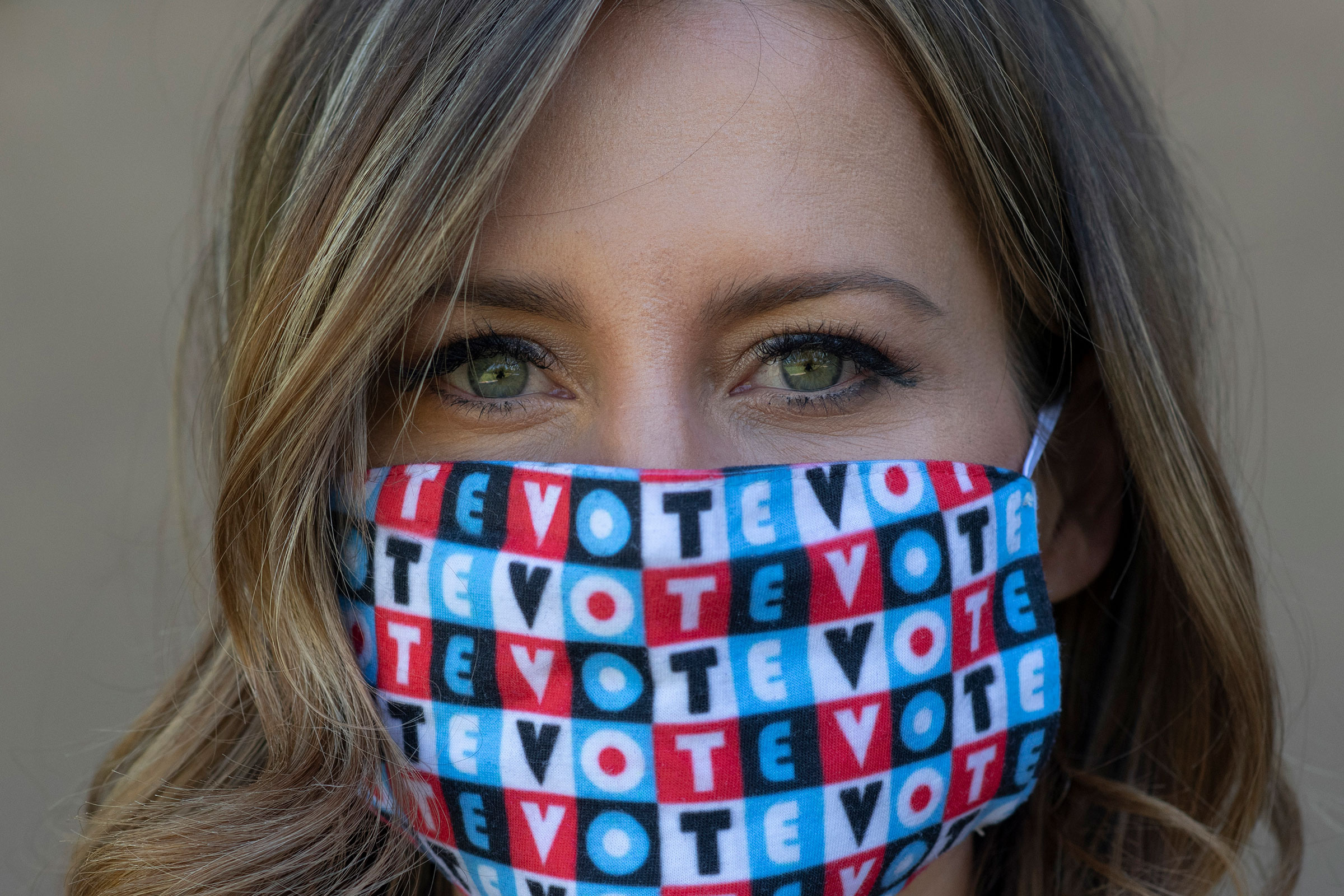
Amber McReynolds remembers the exact day that she started receiving a deluge of calls from officials, election experts and industry leaders around the country wondering how they would administer presidential primaries and general elections in what was increasingly looking to be an unprecedented year: it was her 41st birthday, March 7.
The country’s first COVID-19 outbreak was ripping through Seattle, Super Tuesday had just happened, and the next set of primaries was set to take place a few days later. In a week’s time, President Donald Trump would declare a national emergency.
With infection rates rising and social distancing measures becoming the norm, the need for new voting options became urgent overnight. Counties that previously fielded a few thousand absentee ballot requests were suddenly flooded with hundreds of thousands of voters asking to cast ballots remotely, and election boards were suddenly to find enough people willing to risk exposure to COVID-19 to be poll workers. The prospect of long lines to vote—a sign of poorly functioning election systems in normal times—now seemed potentially life-threatening.
McReynolds, perhaps the country’s most outspoken evangelist for voting by mail, became something of a guru for how to proceed. As messages poured in from all corners of the U.S., one person asked her: “Can you write a plan for the entire country?”
So she did. By mid-March, McReynolds’ organization, the National Vote at Home Institute, had published the first-ever national mail voting proposal, which laid out, in wonky detail, different paths that state election administrators could take to ensure that every voter could cast a ballot safely. On March 16, they sent it to election officials in all 50 states. The report had the effect of catapulting McReynolds and her tiny nonprofit into the center of one of the most pitched and vital public policy debates of the year.
For McReynolds, the solution to the problem at hand was not particularly complicated; it was getting there that posed the challenge. According to Vote at Home’s national plan, states’ best option was simple: send ballots, along with return envelopes with pre-paid postage, directly to all registered voters’ homes—and then allow people to return them in as many ways as possible. That could be by mail, by secure drop box, by depositing ballots at a drive-through spot, or by hand-delivering them to an election office or voting location.
“We know what the solution is,” McReynolds says. “It’s just a matter of shifting the giant Titanic that is election administration. And really, it’s 50 Titanics because it’s all run differently in every state.”
Navigating the tarpits
It was a difficult task even in the best of times. McReynolds had already spent years fighting political apathy, skeptical state legislatures, a lack of election funding and baseless concerns about voter fraud as she advocated for targeted reforms that would allow more states to vote from home. Navigating those overlapping tar pits—at lightning speed, during a pandemic—promised to be even trickier. But McReynolds felt up to the challenge. Raised by a school teacher and judge in small-town Illinois, she is no stranger to hard work and service, and as a single mom of two, she’s used to 20 hour work days that often begin before 6 a.m. When the pandemic hit in March, she and her kids had just moved into a new house in Denver, so for months, she worked with her computer perched on moving bins of office supplies while Kenton, 7 and Klara, 9, attended school remotely from their bedrooms.
McReynolds’ 15-year career in elections had also prepared her for this moment. As Denver’s director of elections for most of the last decade, she helped shape Colorado’s system into one of the leading vote-by-mail programs in the country. And since leaving for the National Vote at Home Institute in 2018, she has drawn on her network of connections and her intricate knowledge of complex voting laws to help other election officials nationwide take similar steps.

This year, Vote at Home’s national voting plan has become an indispensable handbook for government officials, from state legislators to county clerks, across the country. The U.S. Election Assistance Commission used information from Vote at Home when communicating with state election administrators and the Cybersecurity and Infrastructure Security Agency (CISA) produced recommendations based in part on Vote at Home’s plan. McReynolds’ team has had a direct impact on how officials in 37 states—both Democratic and Republican—and D.C. have changed their systems this year. (Only five states—Colorado, Hawaii, Oregon, Washington, and Utah—had adopted statewide mail voting prior to the pandemic.)
McReynolds and her staff’s advice for states was straight-forward. The most streamlined option was to mail ballots directly to all eligible voters and then allow them to return them in a number of ways. But if states weren’t able or willing to do that, McReynolds offered a series of backup plans. Politicians could use existing laws to implement what’s known as no-excuse absentee voting, allowing any registered voter to request a mail-in ballot, and let them do so by phone, email, online or paper application. If state laws did not allow for such last-minute changes, McReynolds recommended that officials use emergency legislation or executive orders to implement a no-excuse absentee system. With all of these methods, the guidance stressed that states should institute or increase ballot drop-off locations, extend deadlines to accept ballots postmarked on Election Day, and maintain in-person voting options.
In California, for example, which had already adopted vote-by-mail systems in some counties, Secretary of State Alex Padilla enlisted McReynolds to help with a detailed assessment of what, precisely, each county would need—from new equipment and trainings to voter education efforts—to switch to a full mail-in election. McReynolds has “been a tremendous resource,” Padilla says.
McReynolds has also been in frequent communication with Georgia Secretary of State Brad Raffensperger’s office this year, and after Georgia struggled to handle new technology and the increase in absentee ballots during its primary this summer, the state has now adopted several of Vote at Home’s key recommendations, including a new online portal for voters to request absentee ballots, expanded absentee ballot drop boxes, ballot tracking so that voters can follow their ballot’s progress and, crucially, a rule change that allowed county election workers to begin processing absentee ballots 15 days before Election Day.
McReynolds helped advise Georgia on which vendors to use and on the importance of steps such as having enough drop boxes to handle the increase in absentee ballots. “She uniquely is aware of the pitfalls that can occur when this isn’t rolled out properly,” says Georgia’s Deputy Secretary of State Jordan Fuchs, who described McReynolds as “a strong resource to me personally” this election cycle.
It’s not about politics
Helping voters cast ballots safely, securely and accessibly shouldn’t be a political issue, says McReynolds, who says she’s proudly unaffiliated with either party. “I believe in my heart of hearts that election administration must be free from partisan politics,” she adds.
Voting by mail is associated with higher turnout in the Western states that have implemented all-mail elections, but research has shown it does not aid one party over the other. Traditionally, voting by mail was seen as a boon for older people and rural voters, who are more likely to be Republicans, and while it can present some obstacles for voters who need assistance or don’t have permanent addresses, Democrats have now touted mail-in voting as a convenient option for workers without flexible schedules or those who are concerned about their health.
But the bipartisan benefits have not prevented the move toward voting by mail from being shot through with venomous politics this election cycle. President Trump has repeatedly asserted, against all evidence, that voting by mail will result in “massive fraud” and other Republican politicians have worked tirelessly, filing lawsuits, signing orders and blocking laws, to limit voters’ options. McReynolds says that such politicization only makes it even more important for election administrators to remain neutral sources of trusted information. The National Vote at Home Institute has a bipartisan board and advisors who have worked for both parties. McReynolds herself also makes it a priority not only to communicate with state legislatures and top administrators, but also with local election officials, who are often closer to the nitty-gritty decisions that make an elections system work.
Her goal is not to impose a one-size-fits-all model on every state, but to help reduce barriers and give voters the most options in this election cycle and beyond. In June, McReynolds invited election administrators from Philadelphia and Harris County, Texas, where Houston sits, to observe Denver’s vote-by-mail operation during its primary. Chris Hollins, Harris County Clerk, was impressed by the business mindset and the “factory setup” he witnessed during his trip to Denver. “Government organizations don’t tend to be known for their efficiency,” he notes. But in Colorado, he saw “people from both sides of the aisle all working together to just simply do a job, to process these mail ballots and count them and tally their result.” The trip helped him understand how a mail voting operation could work on a large scale.

While Hollins has faced roadblocks from Texas’s Republican leadership, which has refused to loosen its absentee ballot criteria to include concerns about COVID-19 and challenged many of his decisions, he is embracing incremental improvements. This year, Hollins changed the rules to allow voters to drop off their mail ballots anytime during the county’s early voting period, invested in more technology and staff to process the additional ballots, and expanded in-person options with creative solutions such as drive-thru voting, 24-hour polling places, and voting at major Houston sports arenas.
As early votes pour in and the court rulings continue, McReynolds is closely tracking election updates on social media, where she tries to counter misinformation, encourage election officials who are making progress—and call out those she sees as restricting voter access. With so many rumors, baseless fraud allegations and genuine problems flying around, trust in the election is one of McReynolds’ top concerns. She’s also worried that isolated issues will be seen as indications that the whole election shouldn’t be considered legitimate. “If one person in one state, or even a few don’t get their ballots, but the rest of their neighbors did, that doesn’t mean that there’s some sort of massive problem,” McReynolds says. “That means, what do we do about that issue? Why did that happen? How do we fix it?”
McReynolds remains optimistic. For all the devastation that COVID-19 has wrought, there’s a silver lining: it has helped make voting more accessible to more Americans this year. Election season is not over yet, but if officials can make this fall a success, this year’s changes could permanently shift the baseline for voting in America.
More Must-Reads from TIME
- Donald Trump Is TIME's 2024 Person of the Year
- Why We Chose Trump as Person of the Year
- Is Intermittent Fasting Good or Bad for You?
- The 100 Must-Read Books of 2024
- The 20 Best Christmas TV Episodes
- Column: If Optimism Feels Ridiculous Now, Try Hope
- The Future of Climate Action Is Trade Policy
- Merle Bombardieri Is Helping People Make the Baby Decision
Write to Abigail Abrams at abigail.abrams@time.com